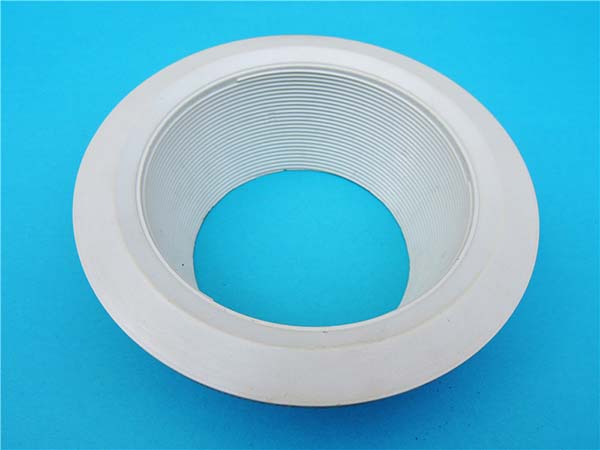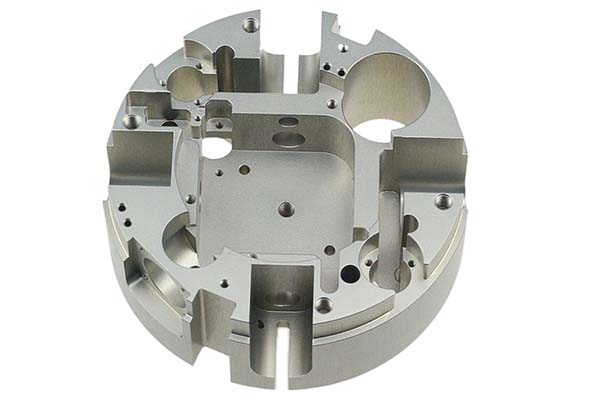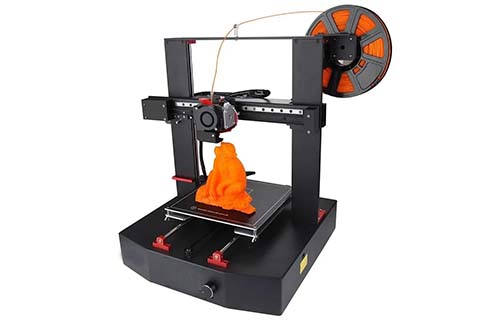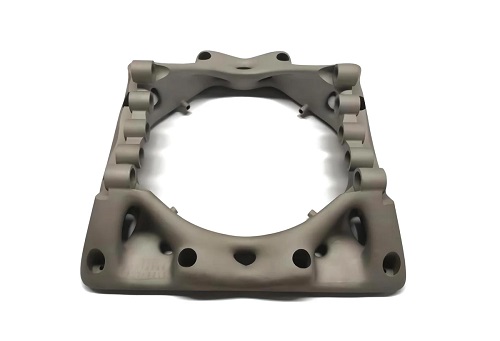II. Understanding PLA in 3D Printing
2.1 What is PLA?
PLA, short for Polylactic Acid, is a biodegradable plastic that has gained significant prominence in the realm of 3D printing. It is derived from renewable feedstocks such as corn starch, sugarcane, and other plant - based sources. This makes it an environmentally friendly alternative to traditional petroleum - derived plastics.
The production process of PLA involves fermenting these renewable materials to produce lactic acid, which is then polymerized to form the final PLA material. One of the basic characteristics of PLA is its relatively low melting point, typically around 150 - 160°C for standard grades. This low melting point makes it suitable for various 3D printing techniques, especially Fused Deposition Modeling (FDM), where the material is melted and extruded layer by layer to build the 3D object. PLA also has good dimensional stability, which means that the printed objects tend to maintain their shape well after printing.
2.2 Advantages of PLA in 3D Printing
2.2.1 Biodegradability
One of the most significant advantages of PLA in 3D printing is its biodegradability. In contrast to traditional plastics like ABS (Acrylonitrile Butadiene Styrene), which can persist in the environment for hundreds of years, PLA has the potential to break down much more quickly. When placed in a suitable environment, such as an industrial composting facility with the right temperature, humidity, and microbial activity, PLA can decompose within a few months to a few years.
For Yigu Technology example, in a study by [Research Institute Name], it was found that under ideal composting conditions, PLA samples completely degraded within 6 - 12 months, while equivalent ABS samples showed no signs of degradation even after 5 years. This biodegradability is crucial for reducing the environmental impact of 3D printed products. In applications where the 3D printed parts have a short lifespan or are disposable, using PLA can prevent the accumulation of plastic waste in landfills or natural environments.
2.2.2 Renewable Feedstocks
PLA is sourced from renewable materials like corn starch and sugarcane. These raw materials are abundant and can be replenished through agricultural production. This stands in sharp contrast to traditional plastics, which rely on finite petroleum resources. By using PLA in 3D printing, manufacturers can contribute to a more sustainable manufacturing ecosystem.
The use of renewable feedstocks also has economic implications. As the demand for petroleum - based plastics is closely tied to the price of oil, which can be volatile, the cost of PLA production is more stable in the long run. Additionally, the production of PLA feedstocks can support local agriculture in many regions. For instance, in the United States, the production of corn - based PLA has provided an additional market for farmers, promoting rural economic development.
2.2.3 Printability and Cost - effectiveness
PLA is known for its excellent printability, especially in FDM 3D printing. Its relatively low melting point and predictable rheological behavior make it easy to extrude through the printer nozzle. The low melting point requires less energy to melt the filament compared to some other materials, which can lead to cost savings in energy consumption during the printing process.
Moreover, PLA filaments are generally more affordable than many other high - performance filaments used in 3D printing. For small - scale manufacturers, hobbyists, and educational institutions, the lower cost of PLA makes it an attractive option. A comparison of the cost of different filaments in the market shows that PLA filaments are often 20 - 50% cheaper than filaments made of more specialized materials like polycarbonate or nylon. This cost - effectiveness allows for more experimentation and prototyping without a large financial investment.
2.3 Limitations of PLA in 3D Printing
2.3.1 Mechanical Properties
While PLA has many advantages, it also has limitations in terms of its mechanical properties. Compared to traditional engineering plastics such as ABS or polycarbonate, PLA has a relatively low tensile strength and heat deflection temperature. For Yigu Technology example, the tensile strength of PLA typically ranges from 40 - 70 MPa, while ABS can have a tensile strength in the range of 50 - 65 MPa, and polycarbonate can reach up to 60 - 70 MPa.
The heat deflection temperature of PLA is usually around 60 - 65°C, which means that it can start to deform or lose its structural integrity when exposed to temperatures above this range. This limits its use in applications where high - strength or heat - resistant components are required, such as in some automotive or aerospace parts. In these industries, parts often need to withstand high mechanical stresses and elevated temperatures during operation.
2.3.2 Environmental Conditions for Biodegradation
Although PLA is biodegradable, its degradation is highly dependent on specific environmental conditions. In a standard landfill or in the natural environment outside of an industrial composting facility, PLA degrades very slowly, if at all. The lack of the right temperature, humidity, and microbial activity in these settings means that PLA can persist for a long time, similar to non - biodegradable plastics.
For Yigu Technology example, in a landfill study, PLA samples showed only minimal signs of degradation after 3 years, while in an industrial composting facility, they would have been fully decomposed within a much shorter time frame. This highlights the importance of proper waste management for PLA products. If not disposed of correctly in a composting environment, the environmental benefits of using PLA can be significantly diminished.
III. 3D Printing Technologies Using PLA
3.1 Fused Deposition Modeling (FDM)
3.1.1 Working Principle
Fused Deposition Modeling (FDM), also known as Fused Filament Fabrication (FFF), is one of the most common 3D printing technologies for PLA. In an FDM 3D printer, a spool of PLA filament is fed into an extruder. The extruder contains a heating element that raises the temperature of the PLA filament above its melting point, typically around 150 - 160°C for standard PLA.
Once melted, the semi - liquid PLA is forced through a small nozzle, which moves in a two - dimensional pattern determined by the digital 3D model sliced into layers. As the nozzle deposits the molten PLA onto the build platform or on top of previously deposited layers, the material cools and solidifies almost immediately, bonding to the adjacent layers. This process is repeated layer by layer until the entire 3D object is constructed. For Yigu Technology example, when printing a simple cube, the printer will start by depositing a layer of PLA in a square shape on the build platform. After the first layer is complete, the build platform moves down slightly (by the thickness of one layer, usually around 0.1 - 0.3 mm), and the nozzle deposits the second layer on top of the first, and so on until the cube is fully formed.
3.1.2 Applications and Advantages in PLA Printing
FDM with PLA has a wide range of applications. In rapid prototyping, it is extremely popular. For instance, product designers can quickly create prototypes of new product ideas. A startup developing a new handheld device can use FDM - printed PLA prototypes to test the form factor, ergonomics, and basic functionality of their product before investing in more expensive manufacturing processes.
In the education field, FDM 3D printers using PLA are a staple in many schools and universities. They allow students to bring their 3D design concepts to life. Students can create 3D models of historical artifacts, scientific specimens, or mechanical components for better understanding in subjects like history, biology, and engineering.
The advantages of using FDM with PLA are numerous. First, it has a relatively low cost. The FDM 3D printers are often more affordable compared to other 3D printing technologies. Desktop FDM printers can be purchased for as low as a few hundred dollars, making them accessible to hobbyists, small businesses, and educational institutions. Second, the equipment is relatively simple. FDM printers have a straightforward mechanical structure, which makes them easy to set up, operate, and maintain. Even those new to 3D printing can quickly learn to use an FDM printer. Third, the operation is convenient. The process of loading a PLA filament and starting a print job is user - friendly, and the printing process can be monitored easily.
3.2 Stereolithography (SLA)
3.2.1 Working Principle
Stereolithography (SLA) is another important 3D printing technology that can use PLA - based materials. In an SLA 3D printer, the build material is a photosensitive resin that often contains PLA components. The printer uses a precisely controlled ultraviolet (UV) laser or a digital light processing (DLP) system.
When using a UV laser, the laser beam traces the cross - sectional shape of each layer of the 3D model onto the surface of the liquid resin. The resin is contained in a vat, and as the laser hits the resin, it initiates a photopolymerization reaction. This causes the resin to solidify in the shape of the traced layer. After one layer is complete, the build platform is lowered slightly (by the thickness of one layer), and a new layer of liquid resin is spread over the previously cured layer. The laser then traces the next layer, and the process continues until the entire 3D object is formed.
In a DLP - based SLA printer, instead of a single laser beam, a digital micromirror device (DMD) projects an image of each layer onto the resin. The entire layer is cured simultaneously, which can speed up the printing process compared to laser - based SLA.
3.2.2 Applications and Advantages in PLA Printing
SLA with PLA - based resins is widely used in high - precision model making. For Yigu Technology example, in the jewelry industry, designers can create intricate wax - like models of jewelry pieces using SLA. These models can then be used in the lost - wax casting process to produce high - quality metal jewelry with fine details. In the medical field, SLA - printed PLA models are used for creating patient - specific anatomical models. Surgeons can use these models to plan complex surgeries, practice surgical procedures, and better understand the patient's unique anatomy.
The main advantage of SLA when using PLA - based resins is its high precision. SLA printers can achieve much finer layer resolutions compared to FDM. Layer thicknesses as low as 0.05 mm or even less are possible, allowing for the creation of highly detailed 3D objects. This high precision also results in a much better surface finish. SLA - printed parts often have a smooth surface that requires less post - processing compared to FDM - printed parts. For applications where aesthetics and precision are crucial, such as in the production of art sculptures or high - end consumer product prototypes, SLA with PLA - based resins is an ideal choice.
3.3 Selective Laser Sintering (SLS)
3.3.1 Working Principle
Selective Laser Sintering (SLS) is a 3D printing technology that works with powdered materials, including PLA powder. In an SLS printer, a bed of PLA powder is spread evenly across a build platform. A high - power laser is then used to scan the cross - sectional shape of each layer of the 3D model onto the powder bed.
As the laser hits the PLA powder, it heats the powder to a temperature just below its melting point, causing the powder particles to fuse together. Once one layer is sintered, the build platform is lowered, and a new layer of powder is spread over the previously sintered layer. The laser then scans the next layer, and the process repeats until the entire 3D object is built. Since the unsintered powder remains in place and supports the structure during printing, SLS does not require additional support structures like some other 3D printing methods.
3.3.2 Applications and Advantages in PLA Printing
SLS with PLA is particularly useful in manufacturing complex - structured and high - strength parts. For example, in the automotive industry, it can be used to create lightweight yet strong interior components with intricate internal geometries. These components can be designed to have optimized strength - to - weight ratios, reducing the overall weight of the vehicle and improving fuel efficiency. In the aerospace industry, SLS - printed PLA parts can be used for prototyping and even for some non - critical end - use applications where the combination of strength, complex shape, and lightweight properties are required.
One of the significant advantages of SLS when using PLA is the ability to create parts without the need for support structures. This simplifies the printing process and reduces post - processing time. Additionally, SLS can produce parts with complex internal structures, such as lattice - like structures, which are difficult or impossible to achieve with other 3D printing methods. These internal structures can be designed to provide specific mechanical properties, such as high strength with minimal material usage.
IV. PLA 3D Printing in Different Manufacturing Sectors
4.1 Automotive Industry
4.1.1 Custom Parts Manufacturing
In the automotive industry, PLA 3D printing has found significant applications in custom parts manufacturing. For Yigu Technology example, BMW has been using 3D printing technology with PLA materials to produce custom interior components. These components can be designed to meet the specific needs of different vehicle models or customer preferences. By using 3D printing, BMW can avoid the high costs associated with traditional mold - making processes. A traditional mold for an automotive interior part can cost tens of thousands of dollars, and the production lead - time can be several weeks. With 3D printing, the cost of producing a custom part can be reduced by up to 70%, and the production time can be shortened to a few days.
Another example is in the production of small - batch special parts. Some automotive aftermarket companies use PLA 3D printing to create unique body kits or specialized engine components. These parts are often in low - volume demand, and traditional manufacturing methods are not cost - effective. For instance, a company that produces custom spoilers for sports cars can use PLA 3D printing to quickly produce prototypes and small - batch products. The ability to print these parts on - demand also reduces the need for large - scale inventory storage, saving both space and cost.
4.1.2 Prototyping
PLA 3D printing plays a crucial role in automotive prototyping. Ford, for example, uses PLA 3D printing to rapidly create prototypes of new car designs. This allows the design team to quickly test and validate their ideas. In the past, creating a physical prototype of a new automotive part would involve a complex and time - consuming process, including designing and manufacturing molds, which could take months. With PLA 3D printing, Ford can produce a prototype in a matter of days.
By using PLA 3D - printed prototypes, Ford can conduct various tests such as fit - and - finish tests, aerodynamic tests (by creating scale - model car bodies), and ergonomic tests (for interior components). These tests help in identifying design flaws early in the development cycle. It is estimated that using 3D - printed prototypes has reduced Ford's development costs by 30 - 40% for new vehicle models. Additionally, the ability to quickly iterate on designs based on the test results has significantly accelerated the overall product development process, enabling Ford to bring new models to market faster.
4.2 Aerospace Industry
4.2.1 Lightweight Component Production
In the aerospace industry, weight reduction is a critical factor for improving the performance of aircraft and spacecraft. PLA 3D printing has emerged as a valuable technology for producing lightweight components. For example, some unmanned aerial vehicles (UAVs) use PLA 3D - printed parts for their frames. These parts can be designed with complex lattice structures, which provide strength while minimizing weight.
A study by [Aerospace Research Institution] found that by using PLA 3D - printed lattice - structured components in a UAV, the overall weight of the UAV was reduced by 15 - 20% compared to using traditional manufacturing methods with heavier materials. This weight reduction directly translated to an increase in the UAV's flight endurance by 25 - 30%. In addition, for satellite components, PLA 3D - printed parts can be used in non - critical structural elements. The low weight of these parts helps in reducing the overall launch mass of the satellite, which in turn reduces the cost of launching the satellite into orbit.
4.2.2 Tooling and Jigs
PLA 3D printing is also used to create tooling and jigs in the aerospace industry. Boeing, for instance, uses 3D - printed PLA jigs to assist in the assembly of aircraft components. These jigs are designed to hold parts in place during the assembly process, ensuring accurate alignment. Traditional metal jigs are often heavy, expensive to produce, and time - consuming to manufacture.
With PLA 3D printing, Boeing can create customized jigs quickly and at a lower cost. The cost of producing a 3D - printed PLA jig is approximately 30 - 50% less than that of a traditional metal jig. Moreover, if there are design changes or improvements needed for the jigs, they can be easily modified in the digital model and re - printed. This flexibility in design and production has improved the efficiency of Boeing's aircraft assembly lines, reducing the overall assembly time for each aircraft by 10 - 15%.
VIII. Conclusion
In Yigu Technology conclusion, PLA 3D printing has emerged as a revolutionary force in modern manufacturing. Its unique advantages, such as biodegradability, use of renewable feedstocks, and cost - effective production, have made it an attractive option across multiple industries.
In the automotive and aerospace industries, PLA 3D printing enables the production of custom and lightweight components, reducing costs and improving performance. In the medical field, it has brought about a transformation in the production of prosthetics, orthotics, and surgical models, providing more personalized and cost - effective solutions for patients.







